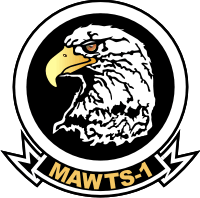The Perspective of the 9th Commander of MAWTS: LtGen Castellaw
Laird had first met LtGen Castellaw when he was DCA. Laird at the time was working with AT and L and met Castellaw in the context of the acquisition of the Osprey and the upcoming acquisition of the F-35B, the twin pillars of what we would call creating the Marines as three-dimensional warriors.
We had the chance to talk with him on November 17, 2023 to get his perspective on MAWTS and its role in the evolution of the Marine Corps.
LtGen Castellaw put it succinctly: “From my own experience, leading Marine and joint forces around the world, we needed the flexibility to provide different sets of tactics against different kinds of popup crisis elsewhere in the world. MAWTS helped inculcate in us that kind of mental agility the Marine Corps excels in”.
“And I think at MAWTS we have that ability to have honest assessment of what we were doing and how to do it better or to avoid certain ways of doing things. Without that kind of brutal honesty, we will not succeed.”

As he thought back to students who came through MAWTS when he was there, they were all leaders who played a key role for the evolution of the Marine Corps air-ground team, such as LtGen Rudder, LtGen Davis and LtGen Heckl.
And one of the impressive things about MAWTS is that the former commanders are kept in the loop about the evolution of WTIs in the current courses. This provides for a feedback loop for excellence which is rather unusual in the world of combat.
According to Castellaw: “Going through MAWTS created a brotherhood in the Marine Corps. And that brotherhood was able to communicate from the same frame of reference throughout our careers, and several went on to take senior command positions. If you went through MAWTS, you learned what it took to make an aviation outfit and by extension the MAGTF truly capable.”
When asked what his major contribution was while being CO of MAWTS, he turned to their work on training and tactics for night vision operation of helicopters and fixed wing aircraft, a capability which would be so decisive in aviation operations in the Post-Desert Storm, Global War on Terrorism operations in Afghanistan and Iraq.

